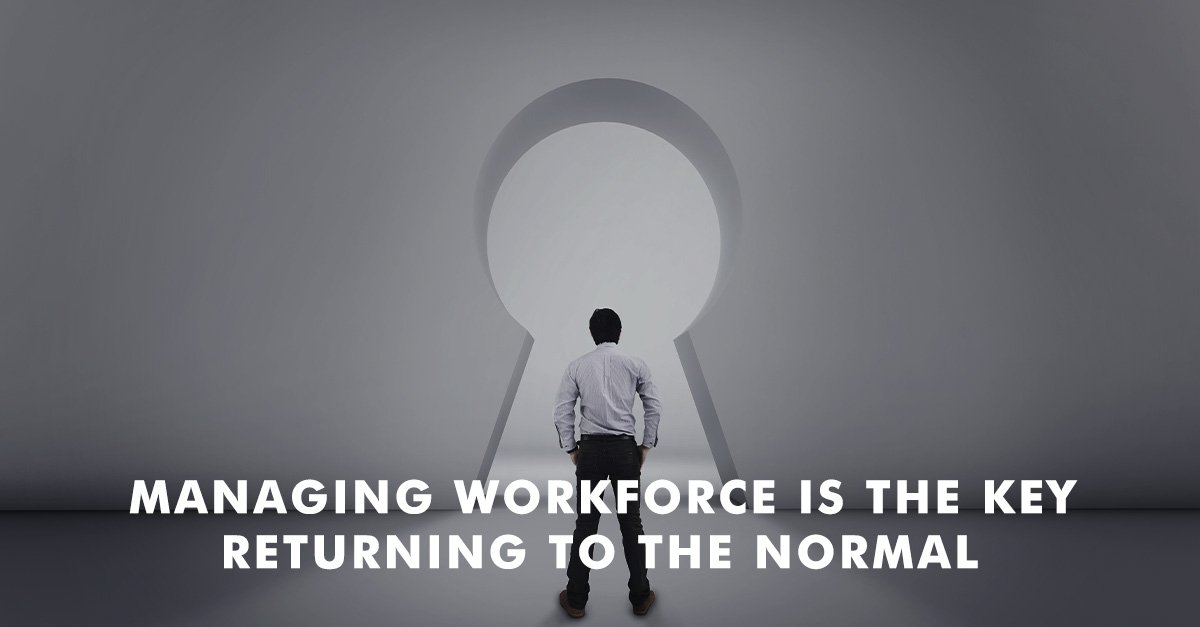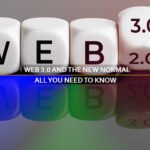
Managing Workforce Is The Key: Returning To The Normal
“Returning to the Normal will not be returning to the earlier ways of doing the businesses but the very way of adapting to the New Normal, by managing the Workforce.”
Business practices in any organization of various industries across the sectors have their way of operating. The businesses comprise business practices spanning numerous business units; some integrate with other business functions, while some are independent. But in almost every business unit, people form the backbone, acting as an integral part of it.
People, workforce, individuals, employees, whatever we call it, all have one thing in common; to add value to the organizations by their services. The COVID-19 pandemic came, and it dismantled the entire value chain of the businesses; some remained helpless, some struggled, while some managed to cope with the disruption that came out of nowhere.
Whenever events, as intense as a pandemic, the people, the businesses’ workforce, get most vulnerable. The workforce in any business practice forms the essential core. The core of business practices is composed of the business goals and objectives to enable the businesses to reach their desired goals.
Pandemic has exposed the workforce in almost every industry, especially those working in the most vulnerable and susceptible sectors such as Oil & Gas, Building & Construction, and Mining. The Health and Safety of the employees becomes of utmost importance when a deadly contagious virus is capable enough to infect a larger workforce in an instant.
People – The Most Vulnerable Among All:
Workforce – the people remains the most vulnerable among all the other business aspects. People form the core of the business functions that leads to achieving desired goals and objectives.
It is imperative to take care of the people first to achieve the desired goals and objectives as without a healthy. Therefore, for a well-functioning workforce, the goals achievement plans are put in place that leads to desired results.
Adopting To Digitisation:
As the businesses adapt to digital practices, it has also hampered the business practices to adapt to the emerging technologies.
While a few businesses found it challenging to adapt to digital practices; such as integrating their businesses with the cloud, embedding the existing business practices with AI; and implementing the data architecture in the new business practices.
A few, such as the manufacturing companies extensively dependent on the supply chain; found it challenging to re-emerge with the entire value chain to digitize their business practices.
Financial Security At Stake:
As digitization has provided new opportunities for businesses to leverage unexplored areas; it has also allowed the cyber attackers to perform unauthorized activities that lead to data threats and cyber security issues.
Such malicious activities impact the workforce and are potential enough to knock down the entire business practice by compromising with the sensitive information.
Such leakage of data and sensitive information put the financial security of the organization at stake. According to research, the cost of shipping a container from Asia to Europe through the sea route costs approximately US$2,000 before the pandemic.
The exact cost has become US$ 12,000 or more today. The surge in the cost is the same unavailability of the workforce. Furthermore, the transportation costs also surged due to a gap in demand and supply of specific products.
However, to control these rising costs, retailers devised a cost control framework addressing the significant issues by devising strategies based on long-term value, investing aggressively in tech talent.
Traditional Employee Engagement:
Employee engagement forms one of the core business etiquettes of any organization. What employees are contributing to the organization is important but how they are contributing is more critical. The pandemic has brought one of the significant challenges of putting the workforce at the front; exposing them to vulnerabilities more than ever before.
With the “remote working” model in place, it becomes hard for employees to meet each other. The way they meet now is through a virtual model of communications, virtual meets, and conference calls.
Businesses thrive on not the products that the organizations sell but how the organizations sell that particular product. Such a thought process in any organization’s vision results in running a business practice smoothly and achieving the desired business objectives.
The new normal that COVID is bringing with it needs a new way of managing the employees; putting behind the traditional methods, and implementing the new ways of communicating with the employees effectively.
Addressing The Issues – Managing Workforce Effectively:
Combatting the uncertainties caused by the pandemic is not the only issue organizations are worried about, but addressing the workforce needs is also something that needs to take care of to achieve desired results effectively.
Addressing Health & Safety Of The Workforce:
Addressing the Health and Safety of the workforce is of utmost importance. The employees working in the oil and gas refineries, building and construction sites, mining fields are susceptible to risks to their health and safety.
Devising risk aversion plans and frameworks addressing the health and safety of the employees; ensuring them with the utmost care about their well-being results in leading the workforce from the front.
For instance, devising a risk aversion plan for oil refining that talks about the unprecedented potential risks and ways to address those risks go a long way to handle employee well-being. And it also mitigates the risk that might go unnoticed at times.
Streamlining The HR practices:
HR practices in the COVID and post COVID era are not limited to taking care of the onboarding of the employees and their training and development purpose. Moreover, the HR practices have maintained effective communication among the stakeholders as the “remote work model” has become the new normal.
Streamlining the HR practices that address the employees’ well-being in remote work scenarios results in an effective workflow across the business units.
Training & Development Of Workforce:
Adapting to the new way, the business work; due to the disruption that the pandemic has caused, effective training and development of the workforce become inevitable.
Regular training and development addressing the business requirements and scaling up with new expertise to remain competitive have become important.
The organizations invest in the training and development of the employees with the much-needed agile and smooth business expertise results in effectual output and desirable results across the business functions.
Conclusion:
An event like a catastrophic and devastating pandemic causes disruption that leads to unprecedented risks and uncertainties. However, adapting to the disruption that emerging technologies cause makes employees the center of focus to achieve the desired results.
Therefore, returning to the Normal will not be returning to the earlier ways of doing the business. Instead, the very way of adapting to the New Normal is by managing the workforce and addressing the employees’ issues to thrive the businesses in the longer run.





